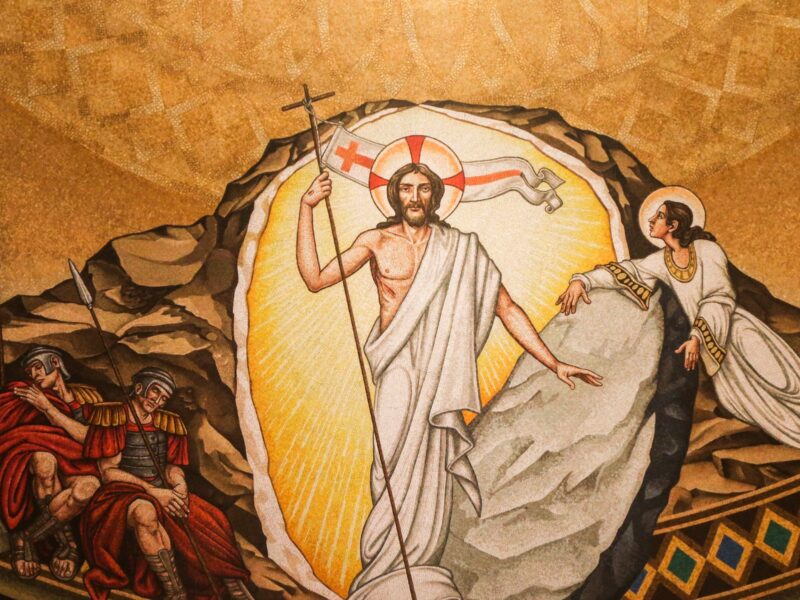
Have Mercy on Me
Thirtieth Sunday of the Year. Fr Aidan Nichols shows us how to read the miraculous cure of Bartimaeus in the light of creation and redemption in Jesus Christ.
Before getting onto the spiritual significance of today’s Gospel, there is an obstacle we need to clear out of the way. This story is a miracle story, so the obstacle is miracles. If we can’t see how miracles are in any way thinkable, we’re not likely to be very receptive to the spiritual message that comes over in this Gospel via a miracle and in no other way.
Ever since the eighteenth century, miracles have had a bad press in European thought. The position of the Scottish philosopher David Hume is typical. Hume doesn’t try to prove that in a world set up by a Creator miracles are impossible. To claim that, he thought, would imply a hot line to the mind of God quite as dogmatic as the one claimed by believers. Hume simply points out how it is part and parcel of being reasonable, being rational, to accept that the world is orderly and predictable: that the sun will rise each morning and my toothbrush will not have changed overnight into a tortoise. So, Hume concludes, it’s always more reasonable to suppose that something has gone wrong with the evidence than to accept that a miracle actually happened – unless, that is, we have absolutely overwhelming evidence in the miracle’s favour which in practice we never do have.
The question to put to Hume, and to all who reject miracles, is this: what kind of order, in the last analysis, is the order of the world? Only by answering that question can we find our way to the kind of rationality appropriate to understanding an ‘orderly’ world.
Might it not be the case that the order of the world is ultimately the order of the purposes of a good God, a loving God, who has chosen to intervene in history so as to draw human beings to himself? If that is the order of the world, then a miracle might be supremely orderly: it might fit in beautifully with the long-term or structural purposes of the Creator. And only biblical thought, then, would be adequate to living in such a world where God is active.
So a miracle is thinkable after all. It is an event – unusual but by no means unknown – where the personal God intervenes in nature so as to show his hand, to give us a direct glimpse of his goals in history.
The miracle-mediated message of today’s Gospel has its setting in the encounter of a beggar with Jesus. A common enough occurrence: in a society without organized charity, a motley crew of suppliants surfaces every time there’s some chance, however feeble, of relief – ranging from the arrival of a western aid-agency to rumours of a miracle-worker walking the streets. Three things seem worthy of note.
First, the beggar is not fully attuned to our Lord’s wavelength. He calls out to him by the messianic title ‘Son of David’ from which at this point in his ministry Jesus sought to distance himself. He needed to reconstruct people’s understanding of it from the bottom up. Despite this, Jesus hears him, since what matters is not so much the confession, which may possibly be based on a misunderstanding, but the cry of need, ‘Have pity on me’, with its combined candour and confidence. The orthodoxy of our faith is hugely important, yet people who are confused about doctrine can still get close to the incarnate Lord.
Next, we can notice the role of the disciples which is as much as to say, the role of the Church. At first an obstacle to the encounter, they change their minds and play a positive part. ‘Courage’, they say, ‘he is calling you’. It is the story of the apostles in miniature. At first they are almost more trouble than they are worth, but in time the penny drops. The pope and the bishops play now the role of Peter and the others: they are there to do what the disciples do in this Gospel: to say to us by word and example, Courage, he is calling you to himself.
Then thirdly, there is the cure, the gift of sight. We may be sure that the evangelist appreciates the range of metaphor the word ‘see’ contains. Though Jesus heals Bartimaeus in the way a physician would (if he could), behind that physical action lies something more far-reaching.
Lastly, we can note how Bartimaeus’s cry continues to ring through the Church. Byzantine Catholics, like the Eastern Orthodox, use something that looks like the Western rosary (though made of wool) for what they call ‘The Jesus Prayer’ which runs, ‘Lord Jesus Christ, Son of God, have mercy on me’. It is a prayer that consists of the cry of Bartimaeus, amplified by the ecclesial doctrine of who Christ is. It is a good summary of all relationship with God in Jesus Christ.


